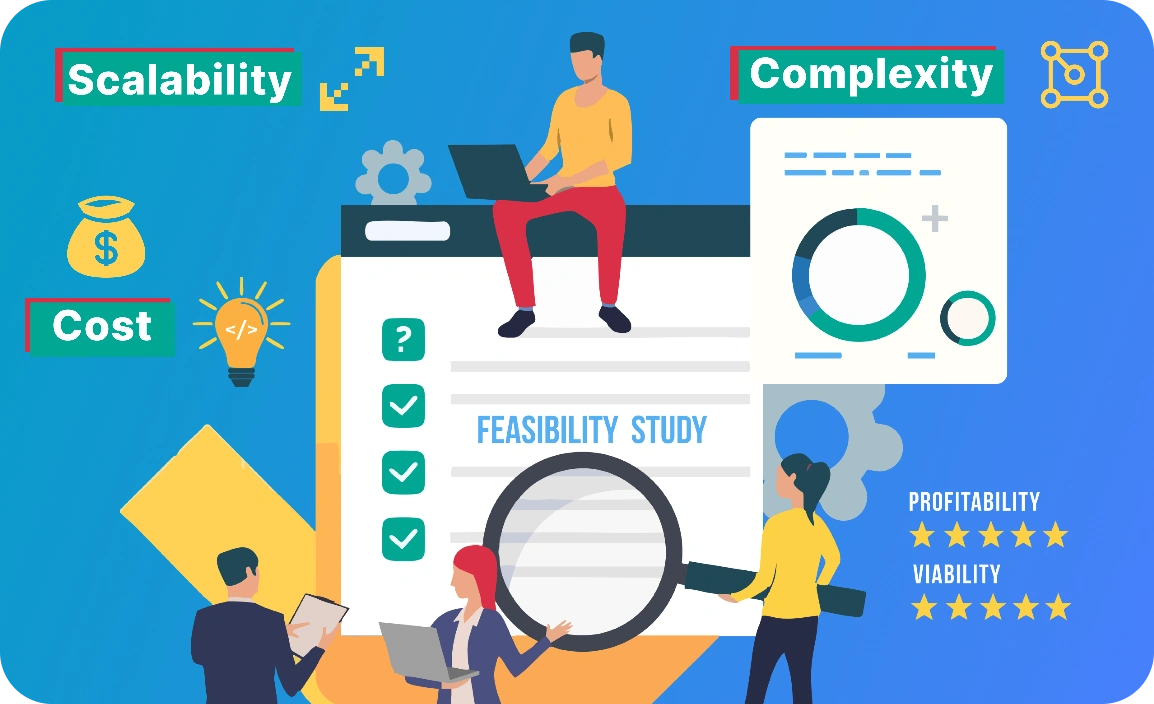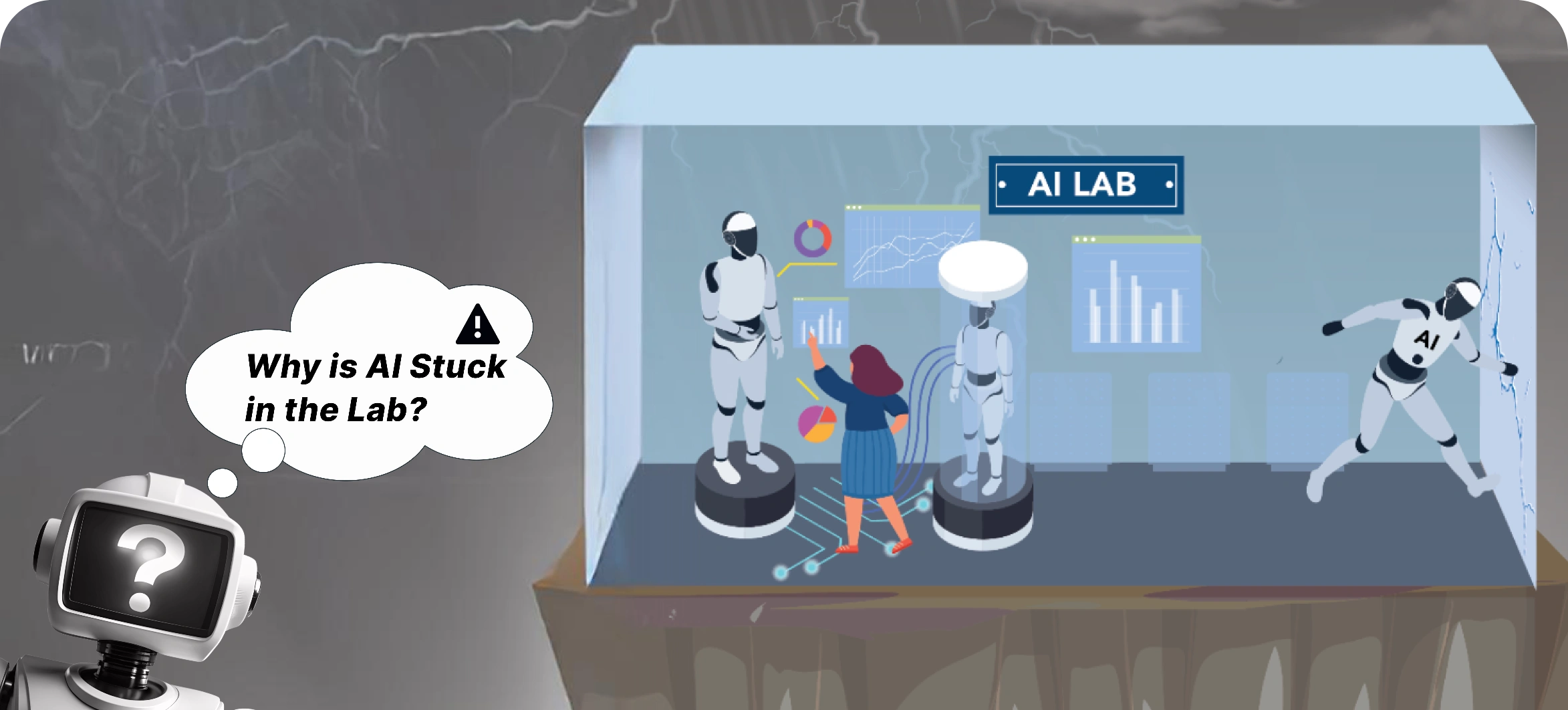Let’s face it : AI is the tech world’s ultimate tease. It promises unparalleled efficiencies and business transformations, yet somehow, most AI projects never leave the lab. According to a Gartner report, a whopping 85% of AI initiatives fail to transition into real-world AI deployment – an evident gap between AI’s promise and its practical implementation.
It’s not that businesses lack ambition; it’s that AI deployment challenges are far messier than the sleek prototypes in labs. It’s important to know what’s holding businesses back from taking AI to the production floor. Let’s explore the real blockers standing in the way of ambition, certainty, and the chase for ROI.

AI deployment challenges
The Ambiguity of AI
You Don’t Know What You Don’t Know
Businesses often enter the AI space with excitement, only to stumble upon unknown risks they didn’t even know existed. Unlike traditional tech projects, AI brings new variables like model drift, data biases, and regulatory pitfalls. The scariest part? Many organizations are unaware of what they’re missing. They don’t just need solutions; they need insight into risks they haven’t identified yet. This blind spot creates hesitation, stalling AI model deployment before they even gain traction.
AI governance frameworks such as the GGC Framework can help here, but many companies are playing catch-up. Without clear frameworks, the fear of unintended consequences can paralyze decision-making. This uncertainty leaves AI projects stuck in endless experimentation rather than being pushed confidently into production.
Analysis Paralysis
Lack of Use Cases Kills Momentum
Ever tried making a big decision with half the information? That’s where many businesses find themselves. Without enough real-world AI case studies showing how AI performs under varied conditions, organizations are caught up in analysis paralysis. Prototypes and lab-grade models can only take you so far; businesses need validated examples to believe in the technology’s potential to scale AI solutions.
It’s like standing at the edge of a swimming pool, unsure if the water is too cold. AI teams need those use cases to test-drive solutions. Without them, moving forward feels like a leap into the unknown. This lack of certainty makes stakeholders reluctant to take that first bold step and move AI from prototype to production.
The Data Dilemma
Garbage In, Garbage Out
In the AI world, data is king—and bad data is the tyrant. Poor data quality has derailed countless projects, leading to inaccurate outputs, hallucinations, and even biased decisions. For example, as per Forrester Research, enterprises typically find that 60-73% of their data goes unused for analytics due to quality issues. Models trained on flawed data sets quickly become liabilities, especially when they perpetuate stereotypes or generate misleading insights.
Without automated data validation pipelines, regular quality assessments, and standardized cleaning protocols, organizations risk compounding these problems. Moreover, the lack of clear governance policies leaves many enterprises struggling to structure and clean their data effectively, leaving AI integrations vulnerable to poor performance and even public backlash. This “garbage in, garbage out” scenario not only undermines AI scalability but also sows doubt about the entire project’s viability.

Garbage In, Garbage Out
The Confusion of Confidentiality
What to Reveal, What to Conceal?
Every AI project requires access to data, but businesses are hesitant. How much should they share without compromising sensitive information? Many organizations fear that sharing proprietary data with AI vendors could open doors to unintended risks such as data leaks or intellectual property theft.
This tug-of-war between transparency and privacy cripples progress. When businesses hold back too much, models are starved of the context they need to perform well. But oversharing is equally dangerous, potentially exposing companies to legal and reputational risks. Until this delicate balance is cracked, Gen AI deployment will continue to stall at the pilot stage.
Guidance. Governance. Control.
Who’s in Charge Here, Anyway?
Here’s a question few organizations are prepared to answer: How do we ensure humans stay in control of AI? With no solid governance frameworks in place, businesses worry that AI systems could spiral out of control. The fear isn’t just about rogue algorithms, it’s about ensuring AI remains a tool to augment human decisions, not replace them entirely.
Human-in-the-loop frameworks offer a potential solution, ensuring that AI acts as an enabler, not the decision-maker. But defining that boundary takes time, effort, and most importantly, cultural alignment across the organization. Until businesses get governance right, AI deployment will stay sidelined, no matter how promising the prototypes may seem.
Cost, Complexity, and Scalability
The Triple Threat
Even when an AI project looks ready to launch, costs spiral and integration falters. Moving from lab to production requires resources: time, money, and technical expertise. AI models need to work seamlessly with existing infrastructure, which often involves AI integration challenges and unforeseen costs.
Many companies underestimate the financial burden of scaling AI solutions. Cloud costs, data storage fees, and ongoing model maintenance pile up faster than anticipated, making the ROI look more distant with every passing day.
AI infrastructure costs can range from as low as $5,000 for basic models to over $500,000 for more complex solutions, depending on the project’s scale and needs. Maintenance alone can add up to 15-20% of the initial development costs, magnifying the importance of planning for ongoing optimization and monitoring. Moreover, skilled roles such as data scientists and machine learning engineers often demand salaries ranging from $150,000 to $400,000 annually, making personnel a significant part of the budget.

Without careful management, these expenses can quickly escalate, threatening both the feasibility and profitability of AI projects, especially if not appropriately balanced with clear ROI goals from the outset.

Cost, Complexity, and Scalability
How Do We Get AI Out of the Lab and Into the Real World?
It’s not all doom and gloom. AI’s potential to drive ROI, enhance operational efficiency, and reduce manual effort is real – it just needs a little push to escape the lab.
Here are a few strategies that can help:
Start Small, Think Big
Begin with proof-of-concept projects to demonstrate value early on.
Invest in Data Quality
Clean, structured data ensures better outputs and boosts confidence in the AI.
Collaborate Across Teams
Involve all stakeholders from day one to align AI efforts with business needs.
Establish Governance Early
Create governance frameworks that outline roles, responsibilities, and oversight mechanisms.
Balance Transparency and Privacy
Develop clear guidelines on data-sharing protocols to avoid paralysis by analysis.
The truth is, AI deployment is about strategy, trust, and alignment. If businesses can address these barriers, they’ll not only take their AI from prototype to production but also unlock its true potential to generate measurable business outcomes.


